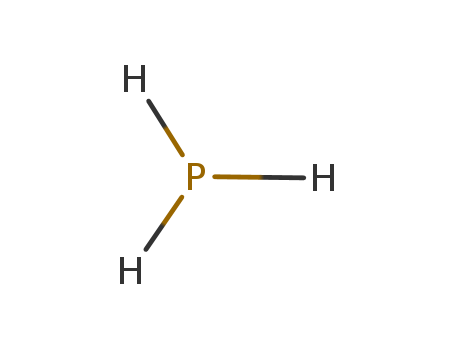- Chemical Name:Phosphine
- CAS No.:7803-51-2
- Deprecated CAS:167076-44-0
- Molecular Formula:H3P
- Molecular Weight:33.9976
- Hs Code.:
- European Community (EC) Number:232-260-8
- ICSC Number:0694
- UN Number:2199
- UNII:FW6947296I
- DSSTox Substance ID:DTXSID2021157,DTXSID701318229
- Nikkaji Number:J43.585F,J643.964K,J643.965I,J3.761C
- Wikipedia:Phosphine
- Wikidata:Q674,Q207877,Q27110342,Q27110349,Q457556
- NCI Thesaurus Code:C163691
- ChEMBL ID:CHEMBL2227836
- Mol file:7803-51-2.mol
Synonyms:hydrogen phosphide;hydrogen phosphorus, PH3;phosphane;phosphine




 F+,
F+, T+,
T+, N
N


